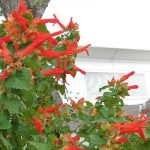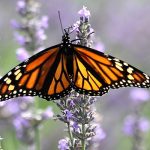The autumn months are the best time to sow wildflowers for spring. But before you start planting, get to know a few particulars first.
This may be fallen leaves and pumpkin everything season, but now is the perfect time to look ahead to what spring will bring — when open fields along highways abound with warm yellow and orange Indian blanket, red Indian paint brush and eponymous wine cup.
Adding Texas wildflowers onto your own plot of land has many rewards. And because we are fast approaching the deadline to get wildflower seeds down, here are the top five things you must know before you journey forward with your wildflower garden.
- Soil – most wildflowers need well drained soil. This means that if your soil is mostly composed of clay, you’ll need to do some amending before you broadcast seed. Stagnant water that doesn’t drain tends to breed diseases and will rot and destroy seeds and seedlings quickly. Blend some compost, expanded shale or lava sand into your existing soil to help.
- Sunlight – Wildflowers need sun! This is a must for most varieties of wildflowers, which need at least eight hours of full, bright sun to thrive and bloom. Planting on the shady side of your house, or under a large tree will not yield much wildflower success, unless the wildflower you’ve chosen performs well in shade, and a few do exist.
- Timing – Most wildflower seeds require several weeks of cold, followed by a warm and rainy spring to break their dormancy; this is call cold stratification. This is why fall is the best time to put wildflower seeds in the ground.
- Method – How you plant your wildflower seeds truly is the most crucial step in growing wildflowers. Without excellent seed-to-soil contact wildflowers seeds will likely not germinate at all, or experience delayed germination. Once the seeds have been broadcast onto the prepared ground, combing over the area with a rake or sod roller will force the seeds into the soil, paving the way to easy germination. Seeds may also fail to germinate if planted too deep.
- Variety – Each wildflower has its own unique characteristics. Some are more challenging to germinate than others. Some are annuals like Indian blanket and poppies, while others are perennials — like salvias and verbenas — that come back from an established root system year after year. A mix of all types can work. Read the directions from your purchased seeds carefully.
For more in-depth information, the Lady Bird Johnson Wildflower Center has an extensive list of articles and Q&A section on wildflower gardening.




